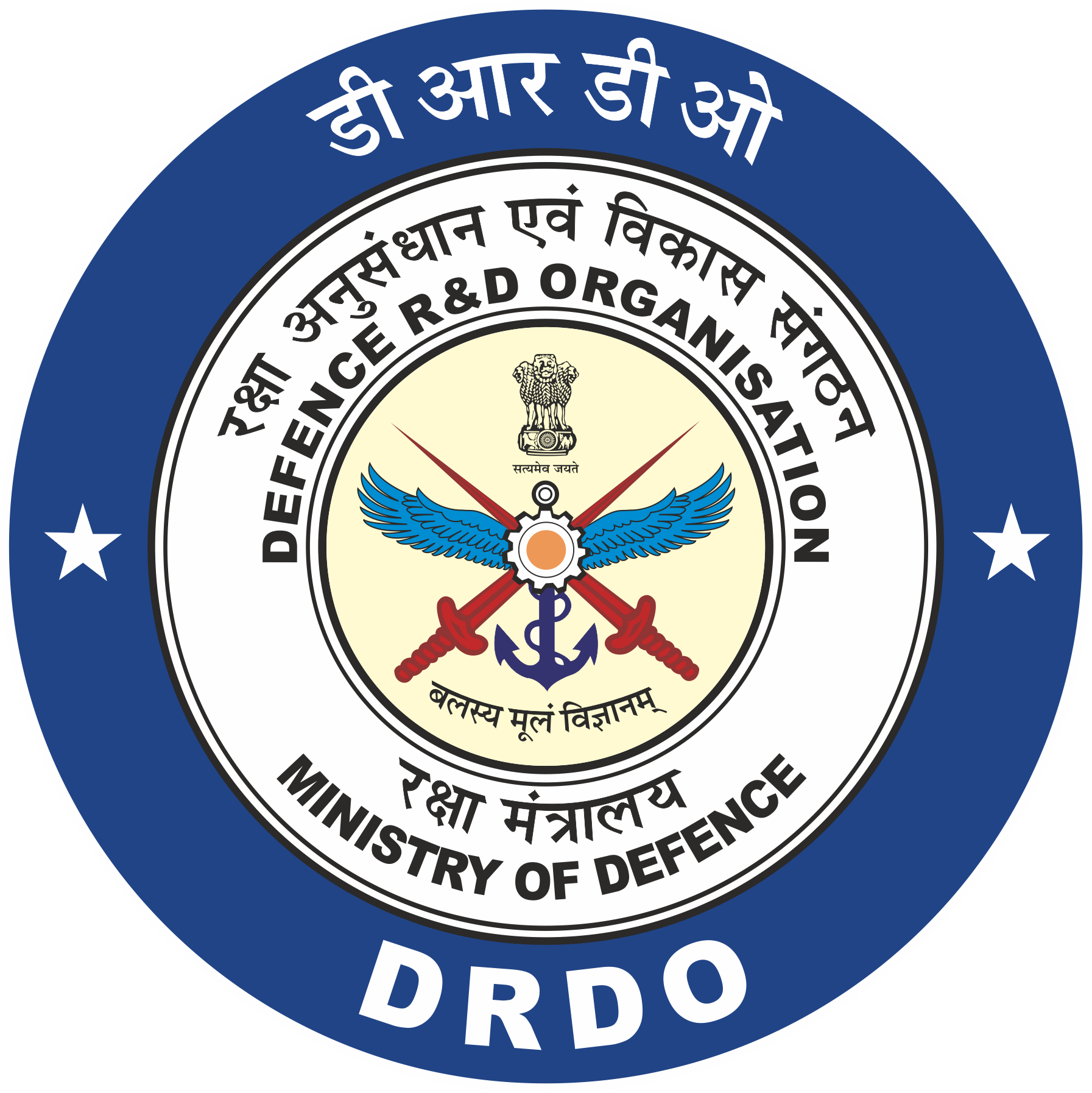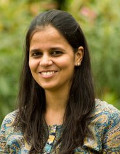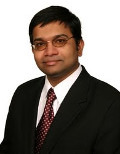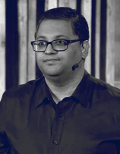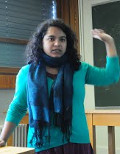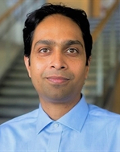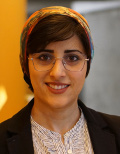Invited Speakers
Ana Aguiar
University of Porto, PortugalVisit Homepage
Mobile IoT plays a critical role in collecting heterogeneous data in a geo-referenced and granular manner, supporting data collection for various scientific disciplines. SenseMyCity is an iteratively designed mobile opportunistic IoT crowdsensing tool that evolved organically to meet the growing requirements of interdisciplinary sensing projects, from biomedics and psychology to transportation and networking. Over the years, we collected around 100 Million GPS data points from more than 1000 participants, spanning more than 550000 km and 60000 hours of GPS trajectories.
This talk will show 3 flagship projects enabled by SenseMyCity, as well as capabilities that were iteratively added to the tool to improve usability. First, it was used to collect 145h of daily work-trips from 36 bus drivers, including their cardiac signals, facilitating memory recall of stressful situations and contributing to characterize bus drivers' cardiac stress sources. Secondly, SenseMyCity's capability to automatically collect high-frequency sensor data only during users’ trips allowed us to quantify the advantage of using public transportation, and we were able to monitor the impact of a specific policy change. Finally, we propose to use granular human mobility profiles for informing offloading strategies during commuter trips.
Ana Aguiar is Assistant Professor at the University of Porto (UP) and researcher at Instituto de Telecomunicações (IT), where she coordinates the Network and Information Processing Group at IT Porto. Her research focuses on wireless and mobile systems, concretely connectivity for mobile nodes, mobile IoT, and data science for intelligent mobility. She is adjunct coordinator of the Center of Competences for Future Cities at UP, where she operated the UrbanSense environmental sensors and the crowdsensing tool SenseMyCity. She led the VOCE project on voice stress detection, and participated in more than 15 projects, in 9 of them as co-PI or WP leader. She published more than 70 journal and conference articles, is reviewer for several IEEE transactions journals, and an expert with the EC.
Avhishek Chatterjee
IIT Madras, IndiaVisit Homepage
Learning the evolution of public opinions around a topic, a.k.a. opinion dynamics, has multiple applications. In today's time, often, opinions expressed on a public or broadcast forum are formed through interactions over multiple online and offline platforms. We consider the problem of learning the influence graph and the dynamics using only binary opinions expressed on a public or broadcast forum, for example likes/dislikes, sharing, re-posting. We study a model where the private beliefs evolve according to the well known linear dynamics on an influence graph and the opinions are the binary expressions of those private beliefs. However, the learner has access only to the binary opinions expressed at different times. We propose a polynomial time algorithm which is provably accurate and provide a guarantee on the sample complexity under some mild conditions.
Avhishek Chatterjee is an assistant professor in the Department of Electrical Engineering at the Indian Institute of Technology Madras. Before that he was a postdoctoral research associate at the Coordinated Science Laboratory of the University of Illinois at Urbana-Champaign. He obtained Ph.D. in Electrical and Computer Engineering in 2015 from The University of Texas at Austin , Master of Engineering in Telecommunication from Electrical Communication Engineering department of Indian Institute of Science, Bangalore in 2008, and Bachelor of Engineering in Electronics and Telecommunication Engineering from Jadavpur University, Kolkata (India) in 2006. He worked as a member of technical staff at Alcatel-Lucent Bell Labs, India from 2008 to 2011.
Sreelakshmi Manjunath
IIT Mandi, IndiaVisit Homepage
In this talk, we discuss mathematical modelling of the BBR congestion control algorithm, recently developed by Google. BBR differs from loss-based TCP—which uses packet loss as a measure of congestion—in that it uses an estimate of bottleneck bandwidth and round-trip time to infer network congestion. Owing to this fundamental difference, existing fluid models for TCP cannot be used for analysing networks that operate over BBR. This necessitates the development of a more evolved fluid model for the underlying end-to-end feedback system. In our work, we develop and propose such a fluid model for BBR operating with routers designed as per (a) large and (b) small buffer-sizing regimes. Further, we validate the proposed model through simulations conducted on NS2. The potential use of the proposed model for a system-theoretic analysis will be outlined, and its appropriateness will be highlighted.
Sreelakshmi Manjunath is with the faculty of School of Computing and Electrical Engineering, Indian Institute of Technology Mandi. She received her BE (Electrical & Electronics Engineering) from Visvesvaraya Technological University in 2012, and her MS and PhD degrees from Department of Electrical Engineering, Indian Institute of Technology Madras in 2018. Before joining IIT Mandi, she was a postdoctoral researcher in the Department of Electrical and Systems Engineering at Washington University in St. Louis (MO, USA). Her research interests are communication networks, vehicular networks, control theory and nonlinear dynamics.
Sudip Misra
IIT Kharagpur, IndiaVisit Homepage
The introduction of IoT in healthcare has led to many advancements and has added new dimensions to the traditional healthcare systems. The interactions between patients and doctors have moved beyond physical visits with the integration of IoT in the healthcare domain. Digital storage of medical data, remote health monitoring, and historical data analysis are some of the significant developments that have been accomplished in the area of healthcare. Wearable devices have played a vital role and have proved to be a game-changer in embedding IoT in healthcare. In the present scenario, wearables have witnessed growing popularity and have become a part of people's lifestyles. Wearables have enabled continuous monitoring of physiological parameters, both locally and remotely. Monitoring the elderly, children, and patients with chronic illnesses have especially benefitted with the availability of wearables. In addition to this, more complex systems for the diagnosis of diseases provide better insights into the patient's condition, which helps in early detection, faster response time, and targeted treatment. IoT-enabled smart healthcare connects patients from less accessible rural areas to remote healthcare professionals. In this lecture, we will discuss the state-of-the-art in the healthcare domain and its evolution with the introduction of wearables and diagnostics systems.
Sudip Misra is a Professor and Abdul Kalam Technology Innovation National Fellow in the Department of Computer Science and Engineering at the Indian Institute of Technology Kharagpur. He received his Ph.D. degree in Computer Science from Carleton University, in Ottawa, Canada. His current research interests include Wireless Sensor Networks and Internet of Things. Professor Misra has published over 350 scholarly research papers and 12 books. He has won nine research paper awards in different conferences. He was awarded the IEEE ComSoc Asia Pacific Outstanding Young Researcher Award at IEEE GLOBECOM 2012, California, USA. He was also the recipient of several academic awards and fellowships such as the Faculty Excellence Award (IIT Kharagpur), Young Scientist Award (National Academy of Sciences, India), Young Systems Scientist Award (Systems Society of India), Young Engineers Award (Institution of Engineers, India), (Canadian) Governor General’s Academic Gold Medal at Carleton University, the University Outstanding Graduate Student Award in the Doctoral level at Carleton University and the National Academy of Sciences, India – Swarna Jayanti Puraskar (Golden Jubilee Award), Samsung Innovation Awards-2014 at IIT Kharagpur, IETE-Biman Behari Sen Memorial Award-2014, and the Careers360 Outstanding Faculty Award in Computer Science for the year 2018 from the Honourable Minister for Human Resource Development (MHRD) of India. Thrice consecutively he was the recipient of the IEEE Systems Journal Best Paper Award in 2018, 2019, and 2020. He was awarded the Canadian Government’s prestigious NSERC Post Doctoral Fellowship and the Alexander von Humboldt Research Fellowship in Germany. His team received the GYTI Award 2018 in the hands of the President of India for socially relevant innovations.
Supratik Mukhopadhyay
Louisiana State University, USAVisit Homepage
In this age of vaccines and antibiotics there is still a constant effort to find new drugs to combat illness for which there are no known cures. There is a need to discover replacements for existing drugs for pathogens that have become resistant to current drugs. In addition there is a need to develop new drug therapies for health issues that adversely affect the lives of hundreds of million people every day of every social standing in every population. Antibiotics and similar drugs have been used so widely and for so long that the infectious organisms the antibiotics are designed to kill have adapted to them, making the drugs less effective. Although the multidrug-resistance in pathogens is growing fast, the number of new drugs being developed to treat bacterial infections has reached its lowest point since the beginning of the antibiotic era. Hence, there is a dire need to develop new platforms and approaches to discover antimicrobial agents against novel molecular targets. Not only new drugs are not being created, but the existing process of creating drugs is slow, inefficient and costly. To address the issues of multidrug-resistance and newly emerging pathogens, we have developed Deep Drug, a computer aided drug design software utilizing AI-based techniques that access very large datasets and, in turn, creates an improved method for identify new compounds rapidly thereby dramatically shortening the developmental time line and the cost to have a new drug accepted.
Dr. Supratik Mukhopadhyay is a faculty member at Louisiana State University. He led the DeepDrug team (Artificial Intelligence for automated drug discovery; https://ai.xprize.org/prizes/artificial-intelligence/teams/deepdrug) to the semifinal of IBM Watson Artificial Intelligence XPrize (out of a total of 142 teams worldwide). Combination therapy discovered by the DeepDrug Artificial Intelligence Platform for COVID-19 is in the process of undergoing human studies in Ukraine and at the Riverside University Health System Medical Center, California (Riverside University Health System Medical Center, Skymount Medical Begin U.S. Clinical Trial for COVID-19 Oral Therapeutics Discovered Using Artificial Intelligence | County of Riverside (rivco.org). It took 13 months from inception to human studies, which is one of the fastest in the pharmaceutical world for a combination therapy. The DeepDrug technology developed by Dr. Mukhopadhyay has been licensed by Skymount Medical. Dr. Mukhopadhyay has received more than $8 million in 12 years in research grants at LSU from NSF, DARPA, ARO, DOE, NGA, USDOT, NASA, state agencies and industry. He has published more than 125 refereed papers in journals and proceedings of reputed conferences which includes the recent best paper award at the 20th International Conference on Runtime Verification, 2020 https://rv20.ait.ac.at/awards/. He has 3 US patents awarded and 8 pending. He cofounded Ailectric LLC (https://www.ailectric.com), an Artificial Intelligence startup focusing on sound, text, and image analytics. He serves as Associate Editor for IEEE Transactions on Artificial Intelligence and Remote Sensing Letters as well as on the program committee of AAAI 2022. In the last 12 years, he has graduated 11 PhD students and have advised 3 postdocs/research associates. With LSU Online, he developed a new online course for LSU Online on Blockchain and Cryptocurrency that is offered in collaboration with IBM.
Srinivas Narayana
Rutgers University, USAVisit Homepage
Extended Berkeley Packet Filter (eBPF) is a mechanism that
emerged recently in Linux to extend the functionality of the
operating system kernel. eBPF works by downloading user code
into the kernel and executing it at specific points of
attachment within the kernel---for example, the network
device driver. By skipping irrelevant kernel code paths and
running the code directly in the kernel with minimal
run-time checking, eBPF provides significant performance
advantages over a user-space implementation. To mitigate
security risks from running untrusted user code, the kernel
implements software fault isolation through static program
analysis, encapsulated into an in-kernel component called
the verifier. If the verifier cannot prove that a program is
safe, the program is rejected and cannot execute. Hence,
eBPF combines the trifecta of flexibility, safety, and high
performance in a familiar Linux environment. eBPF code is
already widely deployed in several production systems.
Despite the promise, programming high-performance networking
applications in eBPF creates several new challenges.
Optimizing compilers need to incorporate safety into their
optimizations. Developers must wrestle with the arcane rules
of the verifier to prove the safety of their code. The
verifier's static analysis algorithms contained critical
bugs, resulting in disastrous security consequences. This
talk will cover our recent work to address some of these
challenges.
Srinivas Narayana is an Assistant Professor in the Department of Computer Science at Rutgers University. His research goal is to enable developers to implement novel and flexible packet-processing applications, with guarantees of safety and high performance. To achieve this goal, he applies compiler and formal methods technology in domain-specific ways to network software and hardware. Srinivas received his M.A/Ph.D. in Computer Science from Princeton University in 2016 and a B.Tech from Indian Institute of Technology Madras in 2010. Srinivas completed a post-doc at Massachusetts Institute of Technology in 2018. Srinivas's research has been recognized with the best paper award at the 2017 ACM SIGCOMM conference, a Facebook research award, and grants from the National Science Foundation and the Network Programming Institute.
Neeraja Sahasrabudhe
IISER Mohali, IndiaVisit Homepage
Opinion dynamics is a topic of interest in various areas of research including mathematics, physics, social sciences, economics etc. In the era of social media, our views are increasingly influenced by the online groups or communities that we are part of. We are also constantly exposed to various forms of advertising. In this context, there is a growing interest in opinion formation and influencing strategies. In this talk, I will introduce an opinion dynamics model on finite graphs evolving over a finite time horizon. The population has binary opinion and the individuals exhibit conformist as well as rebel behaviour. Assuming that the external influencing agency has a fixed budget in terms of how many time-slots can be influenced, I will discuss optimal opinion-shaping strategies depending on the behaviour of individuals (which may change with time) and the underlying graph structure.
Joint work with Sharayu Moharir, Bhumesh Kumar, Arunabh Saxena and Anmol Gupta.
Neeraja Sahasrabudhe is an Assistant Professor at IISER Mohali. Prior to this, she was a postdoctoral fellow at Indian Institute of Technology, Bombay and a visiting scientist at Indian Statistical Institute, Bangalore. She obtained her Ph.D from University of Padova, Italy. She was jointly advised by Prof. Paolo Dai Pra and Prof. Michele Pavon. She did B.Math (Undergraduation) from ISI Bangalore in 2006, and masters from University of Leiden and University of Bordeaux as part of the ALGANT program in 2008.
Arunesh Sinha
Singapore Management University, SingaporeVisit Homepage
Dr. Arunesh Sinha is an Assistant Professor in the School of Computing and Information Systems at Singapore Management University. Prior to this, Dr. Arunesh Sinha was an Assistant Research Scientist in the Computer Science and Engineering Department at the University of Michigan. Prior to joining University of Michigan, he was a postdoctoral scholar with Prof. Milind Tambe in the Computer Science Department at the University of Southern California. He received his Ph.D. from Carnegie Mellon University. He obtained his undergraduate degree from IIT Kharagpur in India. Dr. Sinha has conducted research at the intersection of security, machine learning and game theory. His interests lie in the theoretical aspects of multi-agent interaction, machine learning, security and privacy, along with an emphasis on the real-world applicability of the theoretical models. He was awarded the Bertucci fellowship at CMU in appreciation of his novel research. His paper was nominated for the best application paper at AAMAS 2016 and he won the best Demo award at AAMAS 2021.
Elahé Soltanaghai
University of Illinois Urbana-Champaign, USAVisit Homepage
Emerging applications such as smart cities, autonomous vehicles, and mixed reality systems rely on embedded systems that are engaging with the physical environment through sensors. Building upon this connection, my vision is to advance Omnipresent Sensing by harnessing the wireless infrastructure in and around buildings and cities to act as a non-intrusive sensing platform. This is possible by innovating at the crossroads of two recent trends in mobile computing: (1) Wireless technologies such as Millimeter-wave (mmWave) and Massive MIMO systems can now support higher bandwidth for communication and improved resolution for RF sensing applications. (2) Advancements in CPUs and RF front-ends are making it easier to develop software-defined sensing and communication systems. This is affording edge devices the ability to do more advanced signal processing and machine learning. In this talk, I will focus on how to design an RF-equivalent of optical retro-reflectors and use them as passive fiducial markers in autonomous vehicles, robotics, and mixed reality applications. I will then discuss how nuances from the environment itself can be leveraged to improve sensing quality in the context of human sensing, object tracking, and indoor localization. I will conclude this talk with a roadmap of combining radar-style RF sensors and wireless communication links for the wireless embedded systems of the future.
Elahe Soltanaghai is an assistant professor of Computer Science at the University of Illinois Urbana-Champaign. Her research builds a foundation for joint communication and sensing in wireless embedded systems of the future by applying signal processing and machine learning techniques to low-level RF signals. Previously, she was a postdoctoral researcher at Carnegie Mellon University in CyLab. She received her PhD in Computer Science from University of Virginia. Reflecting the multidisciplinary nature of her research, her work has been published in premier conferences and journals in the areas of mobile and ubiquitous computing, wireless networks, and energy and infrastructure. She has been named one of the 10 Rising Star Women in Networking and Communications in 2021. She is also the recipient of 2020 ACM SIGMOBILE Dissertation Award runner-up and 2019 EECS Rising Stars.
Koji Yatani
The University of Tokyo, JapanVisit Homepage
Emerging technology including AI and IoT builds strong momentum for studying novel applications. Research on applications touches on many exciting challenges. Besides technical improvements, we need to understand what practices and problems people currently have, and how we can design technology to better fit their activities. Application-oriented thinking enables researchers to develop a capability to obtain a comprehensive perspective on both technology and humans in addition to skills to drive technical breakthroughs. In this talk, I present several recent projects in sensing technology for interactive systems and applications, and share the joy of application-oriented research.
Dr. Koji Yatani (http://yatani.jp) is an Associate Professor and 2017 UTokyo Excellent Young Researcher in Department of Electrical Engineering and Information Systems (EEIS), School of Engineering at The University of Tokyo (Department of Information and Communication Engineering for undergrads), where he leads Interactive Intelligent Systems Laboratory (https://iis-lab.org). He is also affiliated with Emerging Design and Informatics Course, Interfaculty Initiative in Information Studies. His research emphasizes on development and evaluations of IoT applications with novel sensing technology, productivity/creativity support, creative use of AI technology for interactive systems, and usable security. He also extends his research interests to a broader range of topics in HCI, including mobile interaction techniques, quantitative and quantitative studies for understanding users, and assistive technologies.
Xia Zhou
Dartmouth College, USAVisit Homepage
The ability to communicate and sense across the air-water boundary is essential for efficient exploration and monitoring of the underwater world. Existing wireless solutions for communication and sensing typically focus on a single physical medium and fall short in achieving high-bandwidth communication and accurate sensing across the air-water interface without any relays on the water surface.
In this talk, I will describe our effort in exploiting the use of laser light to enable effective communication and sensing in the air-water context. I will present our AmphiLight framework that allows bidirectional, Mbps-level communication across the air-water interface. I will focus on our design elements that overcome full-hemisphere laser steering with portable hardware, handle strong ambient light outdoors, and adapt to dynamics of water waves. I will also briefly discuss our ongoing effort on air-water sensing, and conclude with future work.
Xia Zhou is an Associate Professor in the Department of Computer Science at Dartmouth College, where she co-direct the Dartmouth Networking and Ubiquitous (DartNets) Laboratory and Dartmouth Reality and Robotics Lab (RLab). Her research interests lie broadly in mobile computing with recent focuses on light based communication and sensing, mobile sensing, and human-computer interactions. She is a recipient of the Presidential Early Career Award (PECASE) in 2019, SIGMOBILE RockStar Award in 2019, the Karen E. Wetterhahn Memorial Award for Distinguished Creative and Scholarly Achievement in 2018 and named as N2Women: Rising Stars in Networking and Communication in 2017. She has also won the Sloan Research Fellowship in 2017, NSF CAREER Award in 2016, and Google Faculty Research Award in 2014. She received her PhD at UC Santa Barbara in 2013 and MS at Peking University in 2007.







